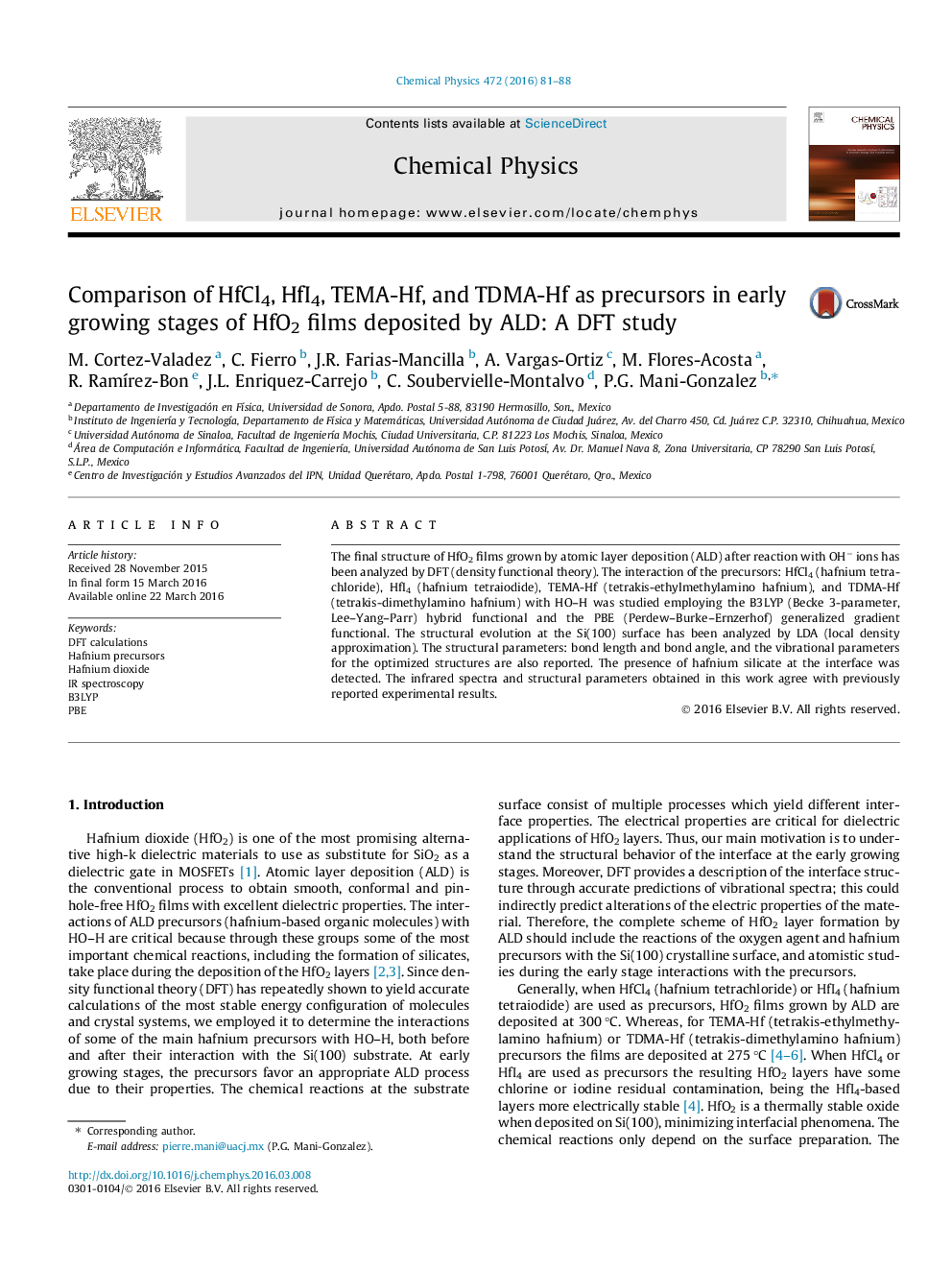| Article ID | Journal | Published Year | Pages | File Type |
|---|---|---|---|---|
| 5372994 | Chemical Physics | 2016 | 8 Pages |
â¢Hafnium oxide growth on Si(100) by atomic layer deposition was simulated.â¢The interface structure was considered as silicate and silicide.â¢The interface was studied employing DFT.â¢TDMA-Hf precursor show better interface stability.
The final structure of HfO2 films grown by atomic layer deposition (ALD) after reaction with OHâ ions has been analyzed by DFT (density functional theory). The interaction of the precursors: HfCl4 (hafnium tetrachloride), HfI4 (hafnium tetraiodide), TEMA-Hf (tetrakis-ethylmethylamino hafnium), and TDMA-Hf (tetrakis-dimethylamino hafnium) with HO-H was studied employing the B3LYP (Becke 3-parameter, Lee-Yang-Parr) hybrid functional and the PBE (Perdew-Burke-Ernzerhof) generalized gradient functional. The structural evolution at the Si(100) surface has been analyzed by LDA (local density approximation). The structural parameters: bond length and bond angle, and the vibrational parameters for the optimized structures are also reported. The presence of hafnium silicate at the interface was detected. The infrared spectra and structural parameters obtained in this work agree with previously reported experimental results.
